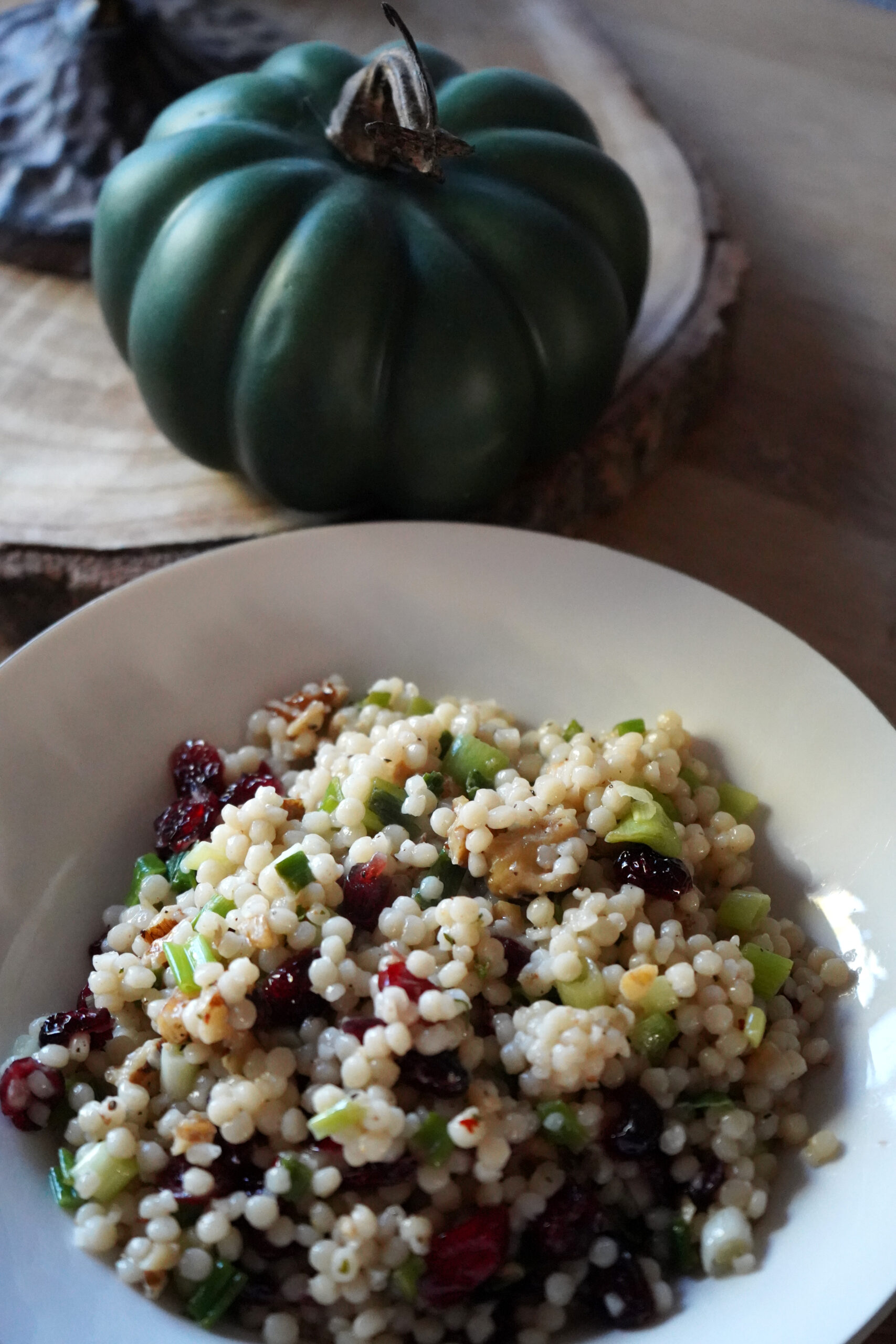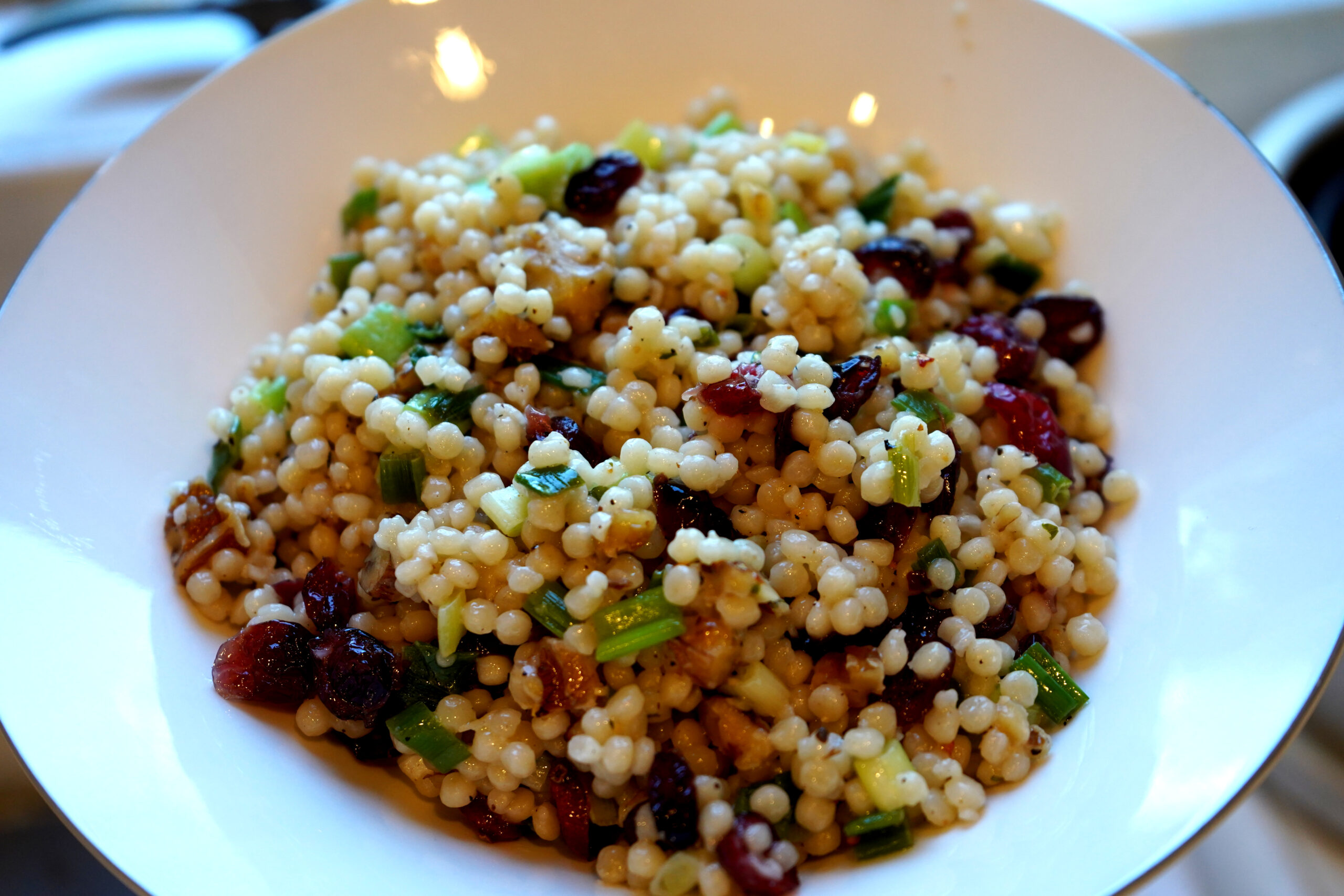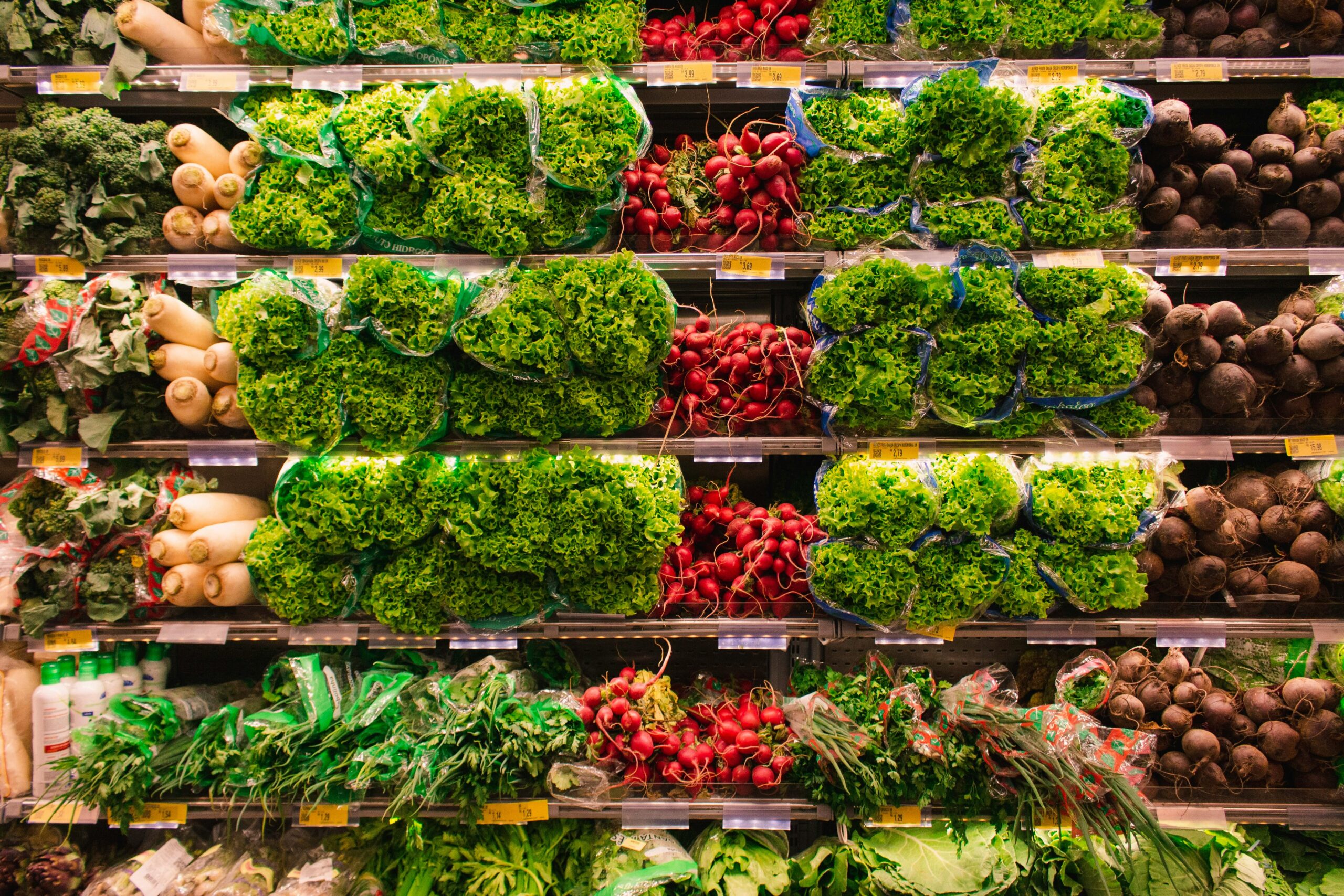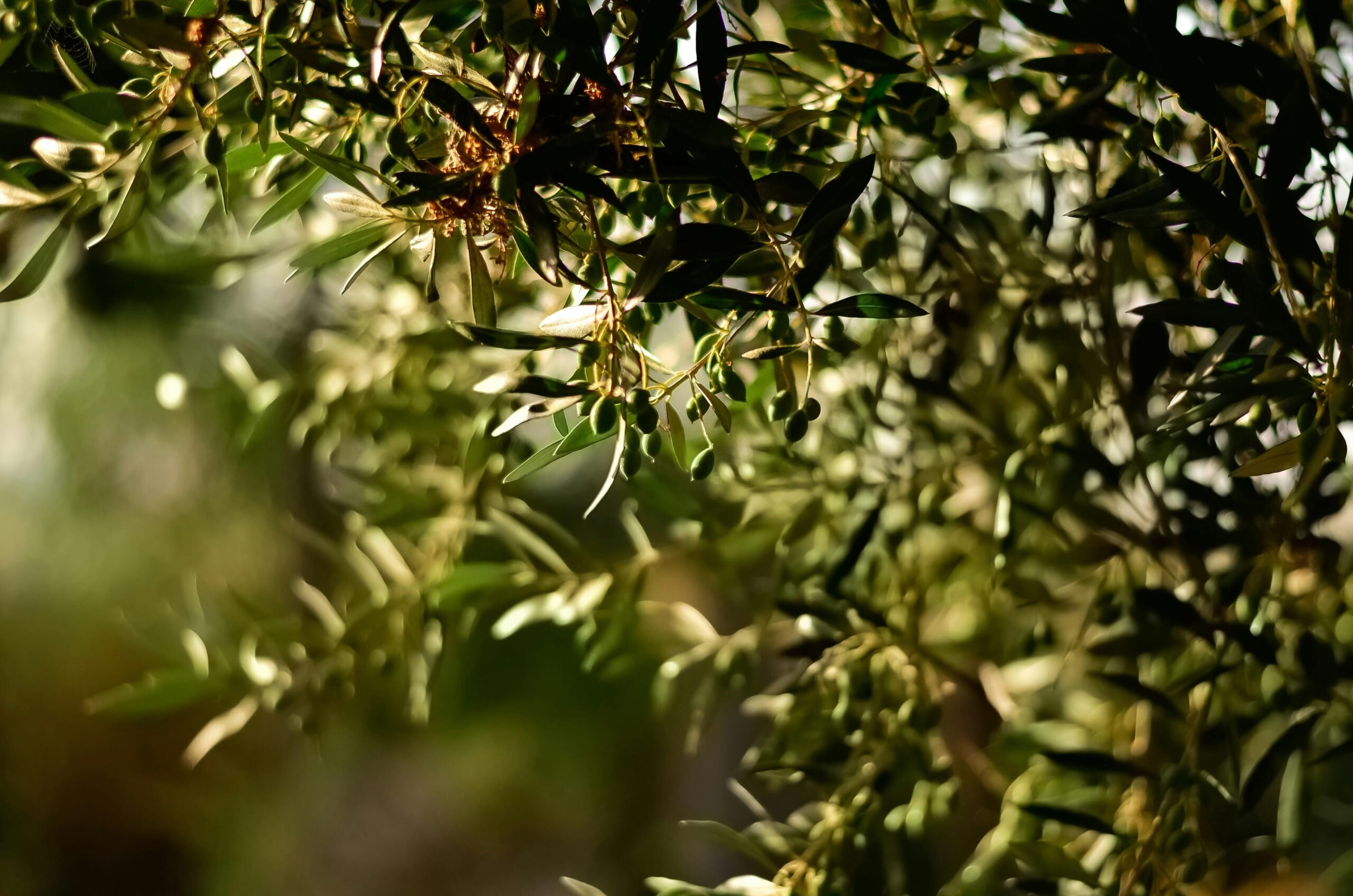Bright, Crunchy, and Beautiful: My Mediterranean Couscous for Fall
There’s a certain stillness that arrives with November.
The light softens, the air feels heavier with memory, and even the mornings seem to move slower — as if the world itself is reminding us to take a breath.
For years, this time of year meant lists. Grocery lists, guest lists, to-do lists. Thanksgiving became something I prepared for instead of something I felt. Somewhere between roasting and reheating, I lost the quiet joy of it — the part that’s less about the table and more about the people who gather around it.
It wasn’t until I started leaning into the Mediterranean way of living — one that prizes slowness, simplicity, and savoring — that Thanksgiving began to look different. And better.
These days, it feels like a long exhale.
Instead of marathon cooking sessions and twelve-dish spreads, I focus on a handful of beautiful, intentional dishes. Instead of crowding the table with options, I fill it with color, texture, and warmth — like golden couscous speckled with cranberries, toasted walnuts, and lemon zest. It’s not about tradition in the strict sense; it’s about feeling tradition differently — lighter, fresher, and more present.
That’s what I’ve come to call my Mediterranean Thanksgiving.
Fall looks different when you see it through Mediterranean eyes.
Here, the colors aren’t just burnt orange and brown — they’re the gold of olive oil, the deep green of rosemary, the pale blush of sunlight over terracotta rooftops. Even in California, I can feel the influence of that rhythm — slower, more intentional.
When I was younger, Thanksgiving was about arrival: flights landing, ovens preheating, timers beeping. But the Mediterranean has taught me that gratitude is not an event — it’s a pace. It’s the way you walk through your day, the way you pour olive oil, the way you take the time to notice how lemon juice catches the light on your fingertips.
And it always comes back to food — not as a performance, but as an expression.
On the coast of southern Italy, food isn’t rushed. It’s assembled, layered, celebrated. There’s always olive oil within arm’s reach and a sense that good things happen when people gather, even if what’s on the table is simple. Maybe especially then.
So when I think about Thanksgiving, I imagine that same philosophy — a long table, candles flickering, dishes that invite you to linger. Nothing fussy, nothing forced. Just flavor, light, and connection.
Hosting used to mean control. I’d worry about timing, about perfect plating, about whether I had enough chairs. But over time, I’ve learned that the best gatherings are rarely perfect — they’re warm.
Mediterranean gatherings are never hurried. Someone’s always late, another forgets the bread, and no one seems to care. The magic is in the pause — that moment when conversation overlaps with laughter and the scent of herbs mingles with candle wax.
This year, I set my table early, hours before guests arrive. I drizzle olive oil over roasted vegetables while jazz hums in the background. The windows are open, the air smells faintly of citrus and wood smoke, and the day stretches before me like a soft linen cloth.
When the doorbell rings, I’m not still chopping. I’m ready — not just with food, but with space to enjoy the evening.
That’s what slow gathering means to me: preparing less, feeling more.
And that’s why the couscous — my new Thanksgiving favorite — fits perfectly into that rhythm. It’s the kind of dish that doesn’t demand precision. It asks for instinct. A little more lemon here, a handful of walnuts there. It feels spontaneous, alive, forgiving — like every good holiday should.
I’ve always believed gratitude is quieter than we make it out to be.
It doesn’t live in speeches or social posts. It lives in the moments we notice — the sound of someone’s laughter at the table, the warmth of a hand resting on yours, the way olive oil glows like gold in the afternoon light.
Mediterranean culture is built on this kind of gratitude — the kind that’s less spoken and more lived. Every meal, no matter how simple, is treated as an occasion. Even weekday dinners stretch into long conversations, even humble dishes are plated beautifully. Because gratitude isn’t a special event there — it’s a daily habit.
And that’s what I’ve started to bring into my own Thanksgiving.
Yes, there’s still turkey. But there’s also brightness: dishes made with herbs, citrus, and vegetables that taste like sunlight. The couscous with cranberries and green onions has become my way of saying thank you for both — for the comfort of tradition and the freshness of reinvention.
Each bite feels like a reminder: gratitude isn’t about more. It’s about enough.
🍂 The Table That Feels Like Home
There’s something deeply intimate about setting a table.
I start with texture — linen napkins that feel soft against the skin, handmade ceramic plates, olive branches tucked into vases. I don’t aim for symmetry; I aim for soul. I love when the table looks slightly undone, like it’s ready to be lived in.
The Mediterranean way of entertaining is never sterile. It’s sensual — meant to awaken all the senses at once. The scent of rosemary mingles with roasted squash, music hums softly, and light dances off wine glasses. It’s not about impressing anyone. It’s about making everyone feel like they belong.
And maybe that’s what the holidays are meant to do — not overwhelm, but welcome.
When I sit down at my table now, it doesn’t look like the Thanksgivings of my childhood. It’s smaller, quieter, and a little messier. But it feels right. The laughter comes easier, the food feels lighter, and the night lingers longer.
I’ve realized that the table doesn’t have to be grand to be beautiful — it just has to be honest.
If I had to define Mediterranean living in three words, those would be it.
Olive oil — for richness, connection, and nourishment.
Lemon — for brightness, balance, and the reminder that there’s always room for freshness.
Light — for the way it transforms even the simplest moment into something golden.
Together, they’re a philosophy — one that seeps into how I approach the holidays now.
Instead of rushing, I linger.
Instead of over-seasoning, I trust simplicity.
Instead of filling the table, I fill the space with stories, laughter, and time.
The couscous embodies that balance perfectly. It’s not trying to compete. It’s there to complement — to offer something warm and unexpected, something that brings contrast and harmony to the heavier dishes around it.
It’s not showy. It’s intentional.
For a long time, I thought Thanksgiving meant effort — the kind that leaves you too tired to enjoy the meal. But this new way of celebrating has changed that.
Now, I think of it as a long afternoon that eases into evening. The food is made ahead, the wine is open, and the table is ready hours before anyone sits down. I can hear the laughter before the first guest even arrives.
The house smells like roasted lemon and sage, and there’s music playing — sometimes jazz, sometimes Italian classics that make me feel like I’m back in Sicily, where life feels both slower and more alive.
I set out small dishes: marinated olives, roasted peppers, a loaf of bread still warm from the oven. The couscous sits in the center, its golden grains glistening under the candlelight, cranberries like little jewels scattered on top.
And for a moment, I forget about everything else. The deadlines, the errands, the noise. I just sit there, soaking in the glow of it all — the light, the laughter, the feeling that somehow, this is exactly how it’s meant to be.
That’s the beauty of a Mediterranean Thanksgiving. It’s not about recreating tradition — it’s about rewriting it to feel more like you.
When I started Olive to Coast, I didn’t just want to share recipes. I wanted to share a rhythm — a way of living that connects the warmth of the Mediterranean to the soul of California.
And every Thanksgiving, I feel that connection more deeply. The Pacific breeze through my kitchen window feels a little like the Adriatic in November — calm, reflective, full of possibility.
We may live oceans apart, but the spirit is the same: the desire to gather, to nourish, to slow down long enough to really see each other.
The couscous, to me, represents that bridge. It’s the taste of both worlds — ancient and modern, familiar and new. It reminds me that food is never just food. It’s memory, it’s emotion, it’s a way of belonging.
And in a world that constantly asks us to hurry, a Mediterranean Thanksgiving asks something different:
to pause.
to breathe.
to be grateful, not just for what’s on the table, but for the moments that surround it.
Tradition doesn’t have to mean repetition. It can mean rhythm.
Every year now, I build my Thanksgiving around three things: color, calm, and connection.
Color, because food should look alive — greens and golds and reds that make you feel like you’re eating sunshine.
Calm, because the best gatherings come from ease, not effort.
Connection, because without it, even the most perfect meal feels empty.
So I keep it simple: roasted vegetables, a bright couscous, a lemon olive oil cake, and plenty of good wine. No stress, no fuss — just warmth.
The rest takes care of itself.
As the evening fades and the candles burn low, I always find myself lingering at the table long after the plates are cleared. The laughter softens, the conversation slows, and for a moment, everything feels suspended — like time itself is taking a deep breath.
That’s what Thanksgiving feels like to me now.
Not busy. Not complicated. Just full — of flavor, of light, of gratitude.
And maybe that’s the whole point: the Mediterranean doesn’t change what we celebrate — it changes how we experience it.
One slow moment at a time.

Mediterranean Harvest Couscous
Ingredients
Method
- In a medium saucepan, heat 1 tablespoon of olive oil over medium heat. Add the couscous and stir for 2–3 minutes until lightly golden and fragrant.
- Pour in your choice of broth or salted hot water. Bring to a simmer, cover, and cook per package instructions (about 5 minutes for regular couscous, 10 minutes for pearl). Remove from heat and let it sit covered for 5 minutes.
- While the couscous steams, heat the remaining olive oil in a skillet. Add the white parts of the green onions and sauté 2–3 minutes until soft. Stir in the green parts just before removing from heat.
- Fluff the couscous with a fork. Stir in the sautéed onions, cranberries, toasted walnuts, lemon zest, and juice. Season with salt and pepper. Drizzle with a little more olive oil to finish.
- Adjust with extra lemon juice or a pinch of salt if needed. Top with parsley or mint for a fresh, colorful finish.
Notes
- Roasted turkey or chicken with lemon and rosemary
- Balsamic-glazed vegetables
- A crisp white wine like Vermentino or Pinot Grigio







